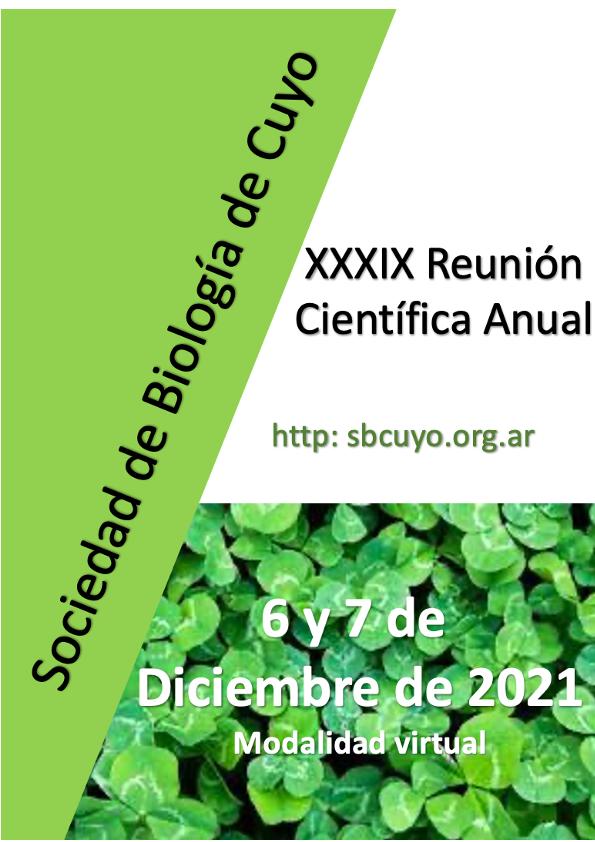Evento
Evaluation of physical-sanitary conditions in butcher shops of Justo Daract, San Luis
Colaboradores:
Gomez, Nidia Noemí; Castro, Claudia Magdalena

Tipo del evento:
Reunión
Nombre del evento:
XXXIX Reunión Científica Anual de la Sociedad de Biología de Cuyo
Fecha del evento:
06/12/2021
Institución Organizadora:
Sociedades de Biología de Cuyo;
Título del Libro:
Libro de Resúmenes: XXXIX Reunión Científica Anual de la Sociedad de Biología de Cuyo
Editorial:
Sociedad de Biología de Cuyo
Idioma:
Inglés
Clasificación temática:
Resumen
Foodborne diseases are caused by ingestion of foodstuffs contaminated by microorganisms or chemicals. They are considered a growing public health problem worldwide. Foodstuff manufacturing equipment and the surrounding environment may serve as potential reservoirs of contamination. Foodborne pathogens are the cause of acute and chronic diseases. Food contamination by microorganisms may occur at any stage in the process from food production to consumption, and may be the result of environmental contamination. Moreover, cross contamination of food with pathogens in the retail environment is an important problem that contributes to an increased risk of foodborne illness. Some pathogenic bacteria such as Listeria monocytogenes, Salmonella spp. or Escherichia coli O157:H7 have the ability to attach onto stainless and other food-contact surface materials; as consequence, foodstuff manufacture equipment and the surrounding environment may serve as potential reservoirs of contamination. The aim of this work was to establish possible risk variables for contamination of meat products depending on the physical-sanitary conditions of facilities, equipment, and the personal hygiene of workers of butcher shops in the city of Justo Daract, San Luis, Argentina. This city located at the east region of San Luis province has 10 butcher shops for a population of 13,130 inhabitants. A risk quantification using a checklist was applied at every butcher shop in the city during September-December 2019. The checklist included five groups of variables (total value, 100): 1) situation and conditions of the building (10.0), 2) equipment and tools (15.0); 3), handlers (25.0), 4) raw materials and products for sale (20.0), and 5) production flow (30.0). Risk assessment on a 1–100 scale was quantified as high-risk (1–40), moderate-risk (41–70), or low risk (71–100). Risk quantification in all butcher shops resulted in two (20.0%) moderate-risk and eight (80.0%) low-risk shops. Minimum-maximal values obtained for each group of the five variables were as follows: situation and conditions of construction, 6.0-9.0; equipment and tools, 10.5-15.0; handlers, 18.7-25.0; raw materials and products for sale, 6.6-20.0; and production flow, 15.1-30.0. Due to the results obtained, some changes are recommended: i) to implement programs of good hygienic and manufacturing practices that allow a strict and constant sanitary control to ensure food safety; and ii) to train butcher shop personnel through a Guide or Protocol of Good Handling Practices to improve the microbiological quality of the product and the hygienic-sanitary conditions of sale establishments and thus, minimize the disease risk that might represent the consumption of meat products.
Palabras clave:
CONDICIONES AMBIENTALES
,
CARNICERÍAS
,
JUSTO DARACT
Archivos asociados
Licencia
Identificadores
Colecciones
Eventos(IMIBIO-SL)
Eventos de INST. MULTIDICIPLINARIO DE INV. BIO. DE SAN LUIS
Eventos de INST. MULTIDICIPLINARIO DE INV. BIO. DE SAN LUIS
Citación
Evaluation of physical-sanitary conditions in butcher shops of Justo Daract, San Luis; XXXIX Reunión Científica Anual de la Sociedad de Biología de Cuyo; Argentina; 2021; 57-57
Compartir



